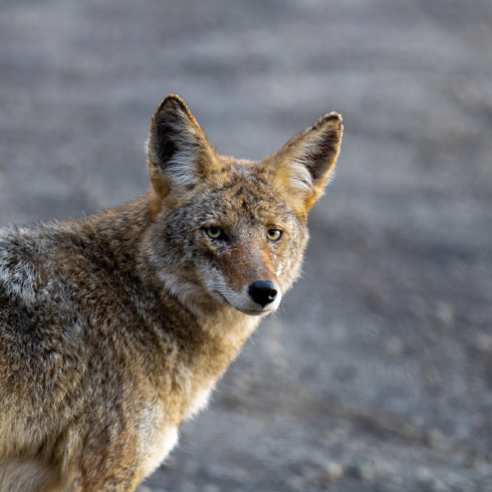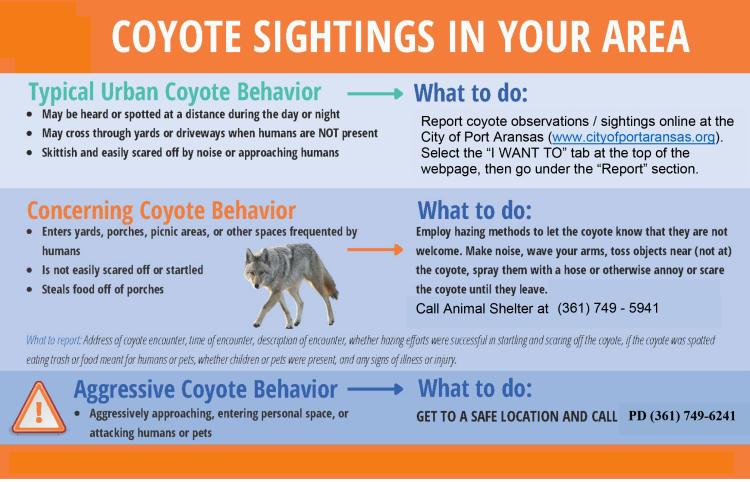Coyote Information
Coyotes are a Part of the Port Aransas Ecosystem
It's important to know the facts so that we can coexist peacefully with coyotes in Port Aransas. These facts, safety tips, and coexistence practices are great tools to have to help you prepare in case you come across one of these Port A locals. These tips can help you anywhere that coyotes are present, not just in Port Aransas. Coyotes and humans can coexist peacefully and should not be something to fear. Know the facts and stay safe!
You can learn more about coyotes in the City of Port Aransas here.
Facts
- Coyotes are found in all of the United States, except Hawaii. Their range now extends from Central America to Canada.
- Coyotes are most active after sunset and through the night, even though they are not strictly nocturnal. You may see them any time of day.
- The coyote is very similar in size to a medium-sized dog and weighs an average of 25 to 40 pounds.
- Coyotes can make 11 different vocalizations: growl, huff, woof, bark, bark-howl, lone howl, group yip-howl, whine, group howl, greeting songs, yelps. They use all these different sounds to communicate.
- Coyote pups are born between early April and late May. The average litter contains four to five pups. They parent their young as a couple or within a family, and may be more aggressive this time of year.
- Coyotes are naturally timid animals and will usually flee at the sight of people. With human habitats expanding, coyotes are adjusting to the changes, so it may be more likely for you to come across these Port A locals.
Don't be Afraid:
Coyotes should not be something to fear. They are just as afraid of humans as humans are of them.
Safety Tips
- Dispose of trash properly and make sure all outdoor trash cans have tightly secured lids.
- Feed your pet inside, and do not leave food outdoors overnight.
- Do not feed the coyotes. This teaches them that humans are a food source, and they will become reliant on people. Keeping coyotes wild and naturally timid of humans is important in helping protect public safety.
- Do not leave small dogs outside unattended. Keep your dogs on a leash when out of the yard, and keep an eye on them when taking them out early in the morning or at night.
- If a coyote approaches you, do not run or turn your back. Make loud noises and stand your ground, making yourself seem as large as possible.
- Coyotes look very much like dogs, especially to small children. Teach children to recognize coyotes and to never run, to calmly go inside the house, and to yell if they are approached.
Paws in the Sand:
The beach is part of the local coyote's home just like it is ours. Seeing coyotes or their tracks on the beach is normal!
Coexistence
Due to habitat loss across America, coyotes are increasingly occupying urban and suburban environments. They actually thrive in these types of environments as well. We can peacefully coexist with coyotes as long as people exercise proper coexistence practices.
- Do not feed the coyotes.
-
Remove accessible food sources from your yard. Consider spilled bird seed, pet food, and garbage.
-
If coyotes approach you in your area, make loud noises and exaggerated movements to scare them off.
- Supervise your pets when outdoors and be sure to keep them leashed at all times.
- It is recommended to use a leash six feet or shorter for your pets.



